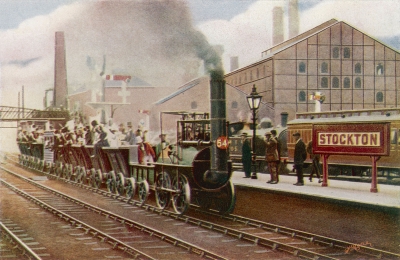
Although the first steam-powered railway had actually run in 1804, it was a private concern hauling industrial loads at an ironworks in Wales. The first railway to open for public use was the Stock ton and Darlington Railway in North East Eng land. It carried goods and passengers between the towns of Stockton and Darlington. The railway was opened in 1825 and its trains were pulled by horse for some time before steam engines were introduced.
The S&DR was involved in the building of the East Coast Main Line between York and Darlington, but its main expansion was at Middlesbrough Docks and west into Weardale and east to Redcar. It suffered severe financial difficulties at the end of the 1840s and was nearly taken over by the York, Newcastle and Berwick Railway, before the discovery of iron ore in Cleveland and the subsequent increase in revenue meant it could pay its debts. At the beginning of the 1860s it took over railways that had crossed the Pennines to join the West Coast Main Line at Tebay and Clifton, near Penrith.
The company was taken over by the North Eastern Railway in 1863, transferring 200 route miles (320 route kilometres) of line and about 160 locomotives, but continued to operate independently as the Darlington Section until 1876. The opening of the S&DR was seen as proof of the effectiveness of steam railways and its anniversary was celebrated in 1875, 1925 and 1975. Much of the original route is now served by the Tees Valley Line, operated by Northern.
Picture Credit : Google




